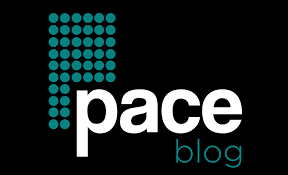In today’s dynamic marketing landscape, personalization and timely communication are paramount. One powerful tool in achieving this is trigger marketing. Trigger marketing involves sending automated messages or content based on specific actions or events. This targeted approach ensures that consumers receive relevant information when they are most engaged. In this article, we will delve into what trigger marketing is, its best practices, and provide examples to showcase its effectiveness.

What is Trigger Marketing?
Trigger marketing, also known as event-based marketing, is a strategy that leverages specific triggers or events to initiate automated marketing communications. For instance, businesses might send personalized recommendations for 6 month anniversary gifts to customers approaching this milestone, utilizing the anniversary as a trigger. These triggers can be diverse, ranging from a user’s behavior on a website to external events like birthdays or anniversaries. The goal is to deliver timely and relevant content or offers, thereby increasing customer engagement and conversions.
Best Practices for Implementing Trigger Marketing
1. Understand Your Audience
Before implementing trigger marketing, it’s crucial to understand your audience’s preferences, behaviors, and pain points. Conduct thorough market research and utilize analytics to gain insights into what triggers are most relevant for your target demographic.
2. Segmentation is Key
Segment your audience based on various criteria such as demographics, behavior, location, or purchase history. This enables you to create highly personalized trigger campaigns tailored to specific customer segments.
3. Choose Relevant Triggers
Select triggers that align with your business objectives and resonate with your audience. These triggers can be behavioral (e.g., website visits, abandoned carts), temporal (e.g., birthdays, holidays), or transactional (e.g., purchases, subscription renewals).
4. Automate with Precision
Utilize marketing automation tools to ensure timely and accurate delivery of trigger-based messages. Automation not only saves time but also ensures consistency in communication.
5. Craft Compelling Content
The content of your trigger messages should be engaging, relevant, and actionable. Personalize the content based on the trigger and the recipient’s profile.
6. Set Clear Goals and KPIs
Define specific goals for your trigger marketing campaigns, whether it’s increasing conversions, driving website traffic, or boosting customer retention. Track key performance indicators (KPIs) to measure the success of your campaigns.
7. Optimize and Test Continuously
Regularly analyze the performance of your trigger campaigns and make necessary adjustments. A/B testing different elements of your messages (e.g., subject lines, call-to-action buttons) can provide valuable insights for optimization.

Examples of Effective Trigger Marketing Campaigns
1. Abandoned Cart Emails
Trigger: When a customer adds items to their shopping cart but does not complete the purchase.
Example: An online clothing retailer sends a personalized email to a customer who abandoned their cart, reminding them of the items left behind and offering an exclusive discount to encourage completion of the purchase.
2. Welcome Series for New Subscribers
Trigger: When a new user subscribes to a newsletter or creates an account.
Example: A software company sends a series of welcome emails to new subscribers, introducing them to the platform’s features, providing helpful tips, and offering a special discount for their first purchase.
3. Birthday or Anniversary Offers
Trigger: When it’s a customer’s birthday or the anniversary of their first purchase.
Example: A restaurant sends a special birthday offer to a loyal customer, inviting them to enjoy a complimentary dessert or a discount on their meal to celebrate their special day.
4. Browse Abandonment Reminders
Trigger: When a user visits specific pages on a website but leaves without taking further action.
Example: An online bookstore sends a follow-up email to a customer who spent time browsing a particular genre, suggesting relevant books and providing a discount code to encourage a purchase.
5. Re-Engagement Campaigns
Trigger: When a customer has been inactive for a defined period.
Example: An e-commerce company sends a re-engagement email to a customer who hasn’t made a purchase in six months, offering an exclusive discount to entice them back to the website.
Trigger marketing is a powerful strategy for delivering personalized and timely communications to your audience. By understanding your customers, leveraging relevant triggers, and crafting compelling content, you can create effective trigger campaigns that drive engagement and conversions to your business. Remember to continuously monitor and optimize your campaigns for maximum impact. With the right approach, trigger marketing can significantly enhance your overall marketing efforts and customer relationships.

